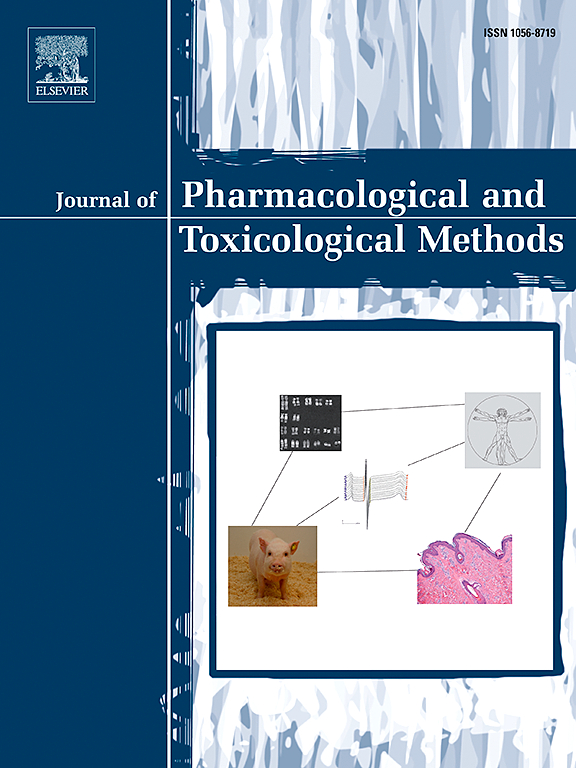Identification of gene expression change associated with isoflurane anesthesia and neurocognitive disorders using bioinformatics methods
IF 1.3
4区 医学
Q4 PHARMACOLOGY & PHARMACY
Journal of pharmacological and toxicological methods
Pub Date : 2025-01-30
DOI:10.1016/j.vascn.2025.107582
引用次数: 0
Abstract
Background
Isoflurane, a commonly used anesthetic, has been linked to neurocognitive dysfunction (NCD). However, the precise relationship between isoflurane anesthesia and NCD remains unclear.
Methods
Datasets related to isoflurane anesthesia were obtained from a public database. The hub genes of isoflurane anesthesia were selected using logistic regression with the least absolute shrinkage and selection operator (LASSO). Human neuroblastoma cell line SH-SY5Y was induced to differentiate into terminal neuron-like cells.
Results
The signaling pathways involved in isoflurane anesthesia and NCD were subjected to analysis, resulting in the identification of 35 signaling pathways, including the PI3K/AKT pathway, the AGE-RAGE signaling pathway and the apelin signaling pathway, which were found to be associated with both NCD and isoflurane anesthesia. A total of nine cross-expressed genes (Nfe2l2, Fgf2, Edn1, Spp1, Hmox1, Picalm, Gnb5, Eif2s1 and Gls) were identified between isoflurane anesthesia and NCD. The LASSO logistic regression model was employed to identify three hub genes (Fgf2, Gnb5, Spp1). The expression of these three hub genes was validated using other expression datasets. In human neuron-like cells, isoflurane also significantly affected the expression of three corresponding human homologous genes. The expression trends of these three genes in human cells were consistent with the expression in rat brains after isoflurane treatment, providing further evidence for the rationality of the three hub genes.
Conclusions
The present study revealed key candidate genes and related functional signaling pathways through bioinformatics analysis and cell experiments, which may serve as the basis for isoflurane-related NCD.
求助全文
约1分钟内获得全文
求助全文
来源期刊

Journal of pharmacological and toxicological methods
PHARMACOLOGY & PHARMACY-TOXICOLOGY
CiteScore
3.60
自引率
10.50%
发文量
56
审稿时长
26 days
期刊介绍:
Journal of Pharmacological and Toxicological Methods publishes original articles on current methods of investigation used in pharmacology and toxicology. Pharmacology and toxicology are defined in the broadest sense, referring to actions of drugs and chemicals on all living systems. With its international editorial board and noted contributors, Journal of Pharmacological and Toxicological Methods is the leading journal devoted exclusively to experimental procedures used by pharmacologists and toxicologists.
 求助内容:
求助内容: 应助结果提醒方式:
应助结果提醒方式:


